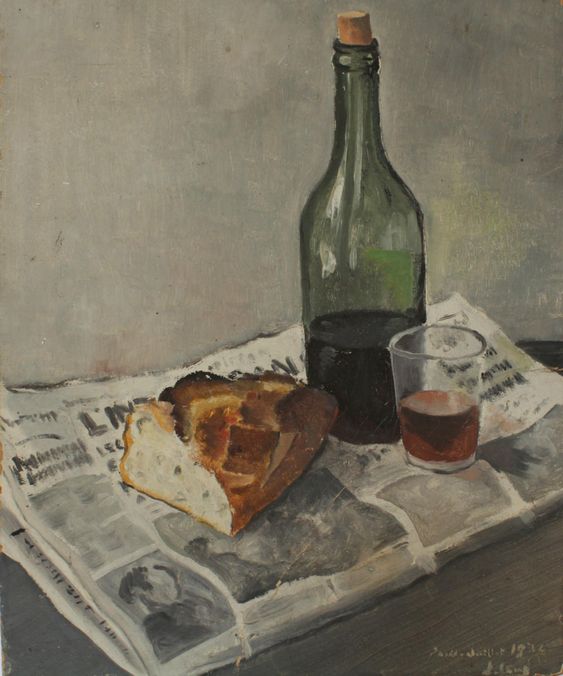This is part four of a six part series that starts here. You can click through to part five at the end of this post.
–
We begin to taste the fruits of our labor during harvest, which runs from mid-August to early November. For a natural winemaker, grapes come into the winery as ready-to-ferment winemaking ‘kits’. Each grape berry has everything it needs to make wine. Acidity, sugar, water, and nutrients for yeast are inside the berry. Color and tannin are in the skin and, on a healthy grape berry, you’ll find a rich natural bloom of yeast and bacteria.

Late season Colombard from Ricetti Vineyard on the way to the winery
For natural winemakers crushing the grapes sets the natural process of fermentation in motion.
-
Once the grape berry is crushed and the juice comes into contact with the skin that healthy bloom of yeast and bacteria starts fermenting the sugars inside the grape.
-
A native fermentation is initiated by a wide variety of non-saccharomyces yeast and bacteria that came riding into the winery on the grape skin. This chorus of microbes creates lots of flavor and a small amount of alcohol. This establishes a distinct expression of place and a rainbow of flavors.
-
Once alcohol gets high enough, these yeast and bacteria die off and saccharomyces cerevisiae yeasts that are present in the cellar and air around us continue the fermentation.
Because these microbes build their population up slowly within the fermenter, the number of yeast and bacteria are well matched to the nutrition available within the grape juice or must (just like us, microbes need a slew of macro and micronutrients in addition to sugar, all of which are naturally found in the grape). This concept of microbial population size not exceeding the carrying capacity of the environment is important because it generally creates a slower, cooler, longer fermentation which produces complexity and more delicate but potent aromatics.
Conventional wine is a little bit of a different story.
-
Once grapes are crushed they are typically dosed with 50 parts per million or more of sulfur dioxide. This kills those non-saccharomyces species and bacteria.
-
The sterilized juice is then sent to a lab to analyze levels of sugar, acid, tannin, etc. Based on these results, the winemaker will adjust the juice to fit desired nutrient parameters and flavor profiles. Adjustments are made through additives like sugar, grape juice concentrate, tartaric acid, diammonium phosphate (a yeast nutrient), dead yeast matter, yeast micronutrients, etc. Enzymes may be added at this point.
-
After the juice is stabilized, a winemaker will inoculate the juice with a single species of commercial saccharomyces cerevisiae, which usually has known aromatic components to it – another effort to maintain a consistent flavor profile. Not only is a singular species lending its voice to the wine, a very high population of yeast is added to the juice at once, so fermentations are normally hotter, quicker, and less aromatic. A conventional wine might also get dosed with mega purple for coloring or oak staves or powder for flavoring and aroma at this point.
-
Once that yeast completes fermentation, if malolactic fermentation as desired, the wine is inoculated a second time with a specific lactic acid bacteria.
Unlike industrial winemaking techniques, true expression of place always take precedent over a controlled outcome in our process. With patience and precision at the forefront, we work with the components of these ‘kits’ (our grapes!) to make high quality wines that express the land they’re from.
Transforming Colombard Grapes into Wine in 5 easy steps

Step 1: Crush!

Step 2: Yeast and bacteria meet and greet.

Step 3: Forklift ballet.

Step 4: Press juice off skins and stems.

Step 5: Transfer juice to neutral barrels (like the ones pictured here) to ferment and age.
This series introduces the ways we work with nature in an effort to help course-correct the California wine industry and make meaningful contributions to the broader movement toward transparency and equity in our food system. It is adapted from Martha’s talk From Grape to Glass: Exploring Natural Wine at Bloom San Francisco 2017.
Photos by Andrew Thomas Lee




